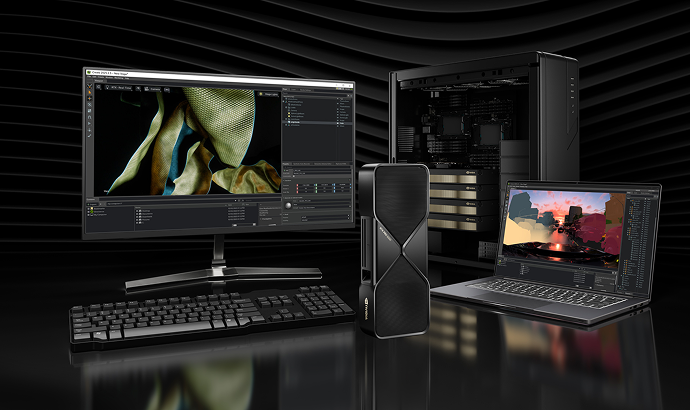

Writing About AI
Uvation
Reen Singh is an engineer and a technologist with a diverse background spanning software, hardware, aerospace, defense, and cybersecurity. As CTO at Uvation, he leverages his extensive experience to lead the company’s technological innovation and development.

The new “arms race” is no longer primarily about nuclear weapons or traditional military hardware but rather about the ability to produce and control advanced semiconductors, specifically those used for Artificial Intelligence (AI). This shift sees geopolitical might measured by the capacity to fabricate nanometre chips and achieve high transistor density, with NVIDIA’s H100 and H200 GPUs being treated as strategic geopolitical assets akin to stealth technology or enriched uranium. Countries are now stockpiling compute power as a matter of national priority, as whoever controls these chips effectively controls the future of AI.
The severe supply crunch for NVIDIA H100 and H200 GPUs is driven by a confluence of factors. Firstly, there’s unprecedented global demand from a wide range of buyers, including Fortune 500 companies, elite AI labs, hyperscalers, and even sovereign-backed funds and oil-rich nations who are paying above market rates to hoard these chips as strategic leverage. Secondly, the production bottleneck lies primarily in TSMC’s CoWoS (Chip-on-Wafer-on-Substrate) packaging process, which is an engineering marvel but cannot scale fast enough. Thirdly, the TRX5090 substrate, a critical component that binds the GPU core to its high-bandwidth memory, is in extremely limited supply. Only a handful of manufacturers, primarily in Japan and Taiwan, can produce it at the required precision and volume, creating a major choke point and geographical vulnerability.
The TRX5090 substrate is the “nervous system” of modern AI infrastructure, absolutely essential for the functionality of H100 and H200 GPUs. Its scarcity is a major bottleneck because only a few manufacturers, Ibiden, Unimicron, and Shinko, operating almost exclusively in Japan and Taiwan, possess the capability to produce these ultra-advanced substrates. This concentration of production in geopolitically volatile regions, such as Taiwan which is at the epicentre of U.S.-China tensions and lies in a seismically active zone, creates a significant structural vulnerability for the entire global AI hardware supply chain. Even with substantial investments in chip fabrication (like the U.S. CHIPS Act), the lack of domestic packaging and substrate production means countries remain reliant on these external, high-risk suppliers.
U.S. export controls, particularly those blocking advanced GPUs like the H100 and A100 from reaching China, have fundamentally reshaped the global AI hardware landscape. This move declared silicon as a strategic weapon, making advanced compute a state-controlled resource. For NVIDIA, it meant losing a significant market, forcing them to design export-compliant versions (like the H800 and A800), which were subsequently also banned. This has pushed China to invest heavily in developing its own domestic AI chip ecosystem. Globally, these controls have triggered a panic-buying spree, with countries and companies hoarding chips, leading to soaring prices and an intensified “Silicon Cold War” where geopolitical shifts directly impact procurement and planning for AI infrastructure.
The “grey market” for GPUs, particularly for the H100, is an unofficial but thriving marketplace where these chips are traded at vastly inflated prices, often double their retail cost. This market includes third-party rental platforms offering hourly access to H100s and GPU-as-a-service operators emerging in regions like Dubai, Singapore, and Mumbai. These international players can leverage regional supply chains, sovereign purchasing power, and looser regulatory oversight to acquire GPUs more easily. This booming grey market severely disadvantages U.S. startups and enterprises without deep vendor relationships or significant financial muscle, as they face prolonged wait times or exorbitant costs. Missing development cycles due to hardware scarcity can be an “extinction-level threat” for emerging companies, effectively locking them out of the AI gold rush and ceding competitive advantage to those with grey market access.
To navigate the GPU supply crisis, two main hybrid strategies are recommended. The first is to “Train in the Cloud, Infer at the Edge.” This involves leveraging the major cloud providers (AWS, Azure, Google Cloud) for resource-intensive model training, as they have secured significant H100 inventory and offer on-demand access despite the high cost. For inference, which is less demanding, organisations can deploy on more readily available and cheaper hardware like NVIDIA’s L40S GPUs. The L40S offers competitive inference performance and is available in weeks, not quarters. The second strategy focuses on “Enterprise Hardware Alternatives You Can Get.” This involves pivoting to systems like Supermicro’s AS-8125GS-TNHR, with lead times of 10-14 weeks, or Dell’s PowerEdge R760xa with L40S GPUs (4-6 weeks). The key is to embrace containerisation (e.g., Docker or Kubernetes) to ensure hardware abstraction, allowing for easy upgrades to H100/H200 when they become available without refactoring the entire stack. These strategies prioritise deployment and momentum over waiting for ideal, unavailable hardware.
CIOs must treat the AI hardware supply crisis as a leadership moment rather than a mere procurement issue. Key actions include:
Compute infrastructure, particularly advanced AI chips, is now considered a “national weapon” because global power and technological supremacy are directly tied to a nation’s ability to control and deploy this silicon. The U.S. blocking chip exports to China explicitly demonstrated that AI power is national power, treating silicon as a state-controlled resource in a new “Silicon Cold War.”
For organisations, compute infrastructure serves as a “competitive moat” because access to AI hardware dictates the pace of innovation and market advantage. In an “AI-first economy,” the ability to secure GPUs, adapt to hybrid environments, and navigate supply chain volatility directly defines a company’s market position. Without controlled access to compute, organisations risk becoming irrelevant, as every “FLOP” (floating point operation per second) counts, and every delay compounds, making compute infrastructure akin to the factory floor, supply chain, and intellectual property all rolled into one.
We are writing frequenly. Don’t miss that.
